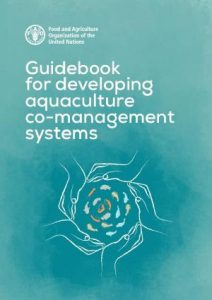Co-management, a collaborative decision-making approach between governments and diverse user groups regarding shared resources, has evolved across natural resource settings. Traditionally applied in fisheries, forestry, and water management, co-management tackles short-term resource allocation and long-term climate adaptation challenges. Despite aquaculture’s perception as a private enterprise, it relies on shared resources and ecosystem services, necessitating collaborative risk and resource management.
 Acknowledging this connection, aquaculture co-management is integral to enhancing aquatic food production, aligning with the FAO’s Blue Transformations vision. The guidebook offers a framework for government, NGOs, and private sectors to develop aquaculture co-management, defining its characteristics, goals, and practices. It outlines a process for implementing and evaluating aquaculture co-management systems, aiming to enhance environmental, social, and economic outcomes. The publication also emphasizes the relevance of aquaculture co-management across diverse production systems, ranging from offshore marine cage culture to coastal, reservoir and riverine pond, cage and pen systems and terrestrial tank systems.
Acknowledging this connection, aquaculture co-management is integral to enhancing aquatic food production, aligning with the FAO’s Blue Transformations vision. The guidebook offers a framework for government, NGOs, and private sectors to develop aquaculture co-management, defining its characteristics, goals, and practices. It outlines a process for implementing and evaluating aquaculture co-management systems, aiming to enhance environmental, social, and economic outcomes. The publication also emphasizes the relevance of aquaculture co-management across diverse production systems, ranging from offshore marine cage culture to coastal, reservoir and riverine pond, cage and pen systems and terrestrial tank systems.